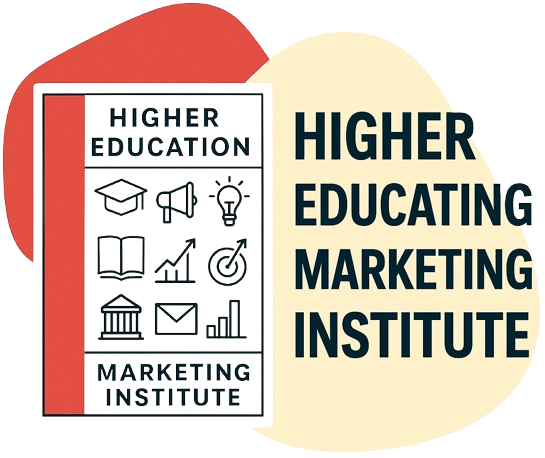
In today’s digital age, higher education institutions face fierce competition to attract prospective students. With the majority of web visits coming from mobile devices, the need for effective SEO tactics has never been more crucial. An interesting statistic reveals that organic search is the primary source of traffic for these institutions, highlighting the significance of implementing successful SEO strategies.
This article will delve into the importance of SEO in boosting enrollment in higher education and provide tactics to effectively target prospective students. From market and keyword research to understanding the student journey stages, every aspect of SEO will be explored.
Additionally, the article will discuss the significance of enhancing brand identity through storytelling, keywords, and social media engagement. By revamping SEO efforts and partnering with content creators, institutions can gain a competitive advantage and achieve success in enrolling students in higher education.
Key Takeaways
- SEO is essential for boosting enrollment in higher education institutions as it drives more traffic to websites.
- Organic search is the most effective traffic source for higher education institutions.
- The student journey consists of awareness, consideration, decision, and retention stages, which can be optimized through SEO tactics.
- Mobile-friendly web design is crucial for higher education institutions as most web visits come from mobile devices and Google prioritizes mobile-friendly websites in web rankings.
SEO Importance

The importance of SEO for higher education institutions lies in its ability to boost enrollment by driving more traffic to their websites. With the increasing competition in the higher education sector, it is crucial for institutions to optimize their online presence and attract prospective students.
Organic search, as a traffic source, generates the most traffic for these institutions. By implementing effective SEO tactics such as market research, keyword research, and segmentation, institutions can target prospective students at different stages of their journey, including awareness, consideration, decision, and retention. Creating high-value authority content that ranks well and addresses search intent is also essential.
Additionally, web design optimization, particularly mobile-friendly design, is crucial as most web visits come from mobile devices. By revamping their SEO efforts, institutions can gain a competitive advantage in 2023 and beyond. Consideration of partnering with freelance writers and content creators can also enhance their content marketing strategy.
Tactics for Targeting Prospective Students
One effective approach for reaching potential students is through comprehensive market research and segmentation. By conducting thorough market research, higher education institutions can gain valuable insights into their target audience, including their demographics, interests, and preferences. This information can then be used to segment the audience into different groups based on common characteristics, allowing institutions to tailor their SEO tactics to each segment’s specific needs and interests.
- Develop targeted keyword strategies: By conducting keyword research, institutions can identify the specific search terms and phrases that prospective students are using when looking for higher education options. This allows institutions to optimize their website content and meta tags to align with these keywords, increasing their visibility in organic search results.
- Create tailored content for each stage of the student journey: Prospective students go through different stages in their decision-making process, from awareness to consideration and ultimately to the decision to enroll. By creating content that addresses the specific needs and concerns of students at each stage, institutions can effectively guide them along the student journey and increase the likelihood of enrollment.
- Utilize segmentation in digital marketing campaigns: Once the target audience has been segmented, institutions can create targeted digital marketing campaigns that reach each segment with personalized messages and offers. This can include targeted social media ads, email marketing campaigns, and personalized website experiences that cater to the unique needs and interests of each segment.
Enhancing Brand Identity

Enhancing brand identity involves crafting a compelling narrative, utilizing relevant keywords, and engaging with prospective students on social media platforms.
Brand identity plays a crucial role in attracting and appealing to potential students in higher education. By telling a unique and authentic story, institutions can differentiate themselves from competitors and create a strong emotional connection with their target audience.
This can be achieved through the use of keywords that resonate with the values and aspirations of prospective students, ensuring that the institution’s messaging aligns with their interests.
Additionally, engaging with students on social media platforms allows for personalized interactions, building trust, and fostering a sense of community.
By consistently reinforcing the institution’s brand identity through these tactics, higher education institutions can effectively position themselves as desirable choices for prospective students.
Conclusion
In conclusion, implementing effective SEO tactics is crucial for boosting enrollment in higher education. By focusing on market research, keyword research, and segmentation, institutions can target prospective students at different stages of their journey.
Creating high-value authority content that ranks well and addresses search intent is essential. Optimizing web design, especially for mobile devices, helps attract more traffic.
Competitor analysis and building brand identity through storytelling and social media engagement further enhance SEO efforts.
By revamping strategies and partnering with content creators, institutions can gain a competitive advantage in the ever-evolving landscape of higher education.
A wise man once said, ‘Success is not the key to happiness. Happiness is the key to success.’




